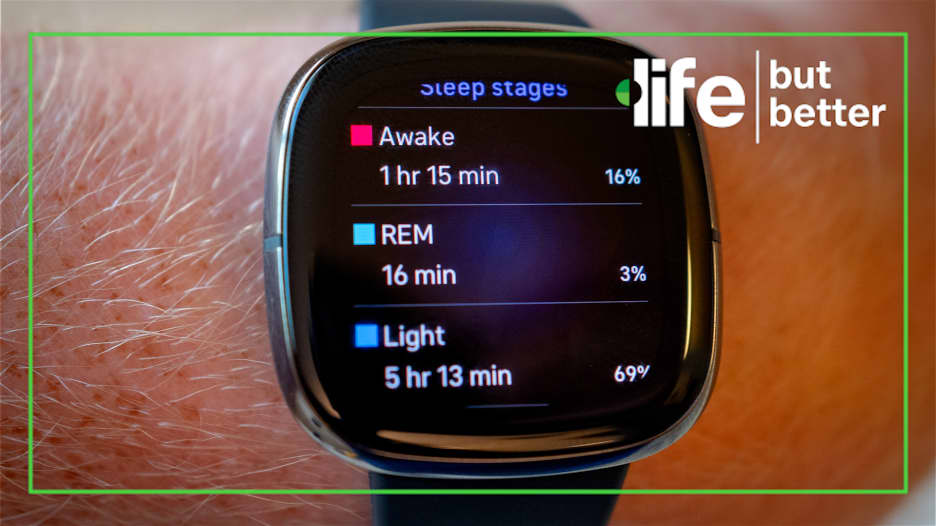دبي، الإمارات العربية المتحدة (CNN) -- أظهرت دراسة جديدة أنّ خسارة موجة النوم البطيئة مع التقدم في العمر، قد يزيد من خطر الإصابة بالخرف.
وقال ماثيو ب. بايس، كبير مؤلفي الدراسة التي نُشرت في مجلة "JAMA Neurology" الإثنين، والأستاذ المساعد بعلم النفس وعلم الأعصاب في جامعة "موناش" بأستراليا لـCNN: "لقد وجدنا أن الشيخوخة مرتبطة بتراجع مقدار مراحل النوم العميقة، المعروفة باسم نوم الموجة البطيئة".
وتابع بايس: "وجدنا بعد ذلك أنّ الأشخاص الذين يعانون من انخفاض أكبر في موجة النوم البطيئة مع مرور الوقت، كانوا أكثر عرضة للإصابة بالخرف خلال السنوات الـ17 التالية من المتابعة".
وتعتبر الموجة البطيئة، المرحلة الثالثة من النوم، مهمة لصحة الدماغ. خلال هذه المرحلة، يزيل الجسم المواد غير المرغوب فيها، أو التي يحتمل أن تكون ضارة، من الدماغ، ضمنًا بروتين بيتا أميلويد، المؤشر البارز على الإصابة بمرض الزهايمر.
وقال الدكتور ريتشارد إيزاكسون، مدير الأبحاث بمعهد الأمراض التنكسية العصبية في ولاية فلوريدا الأمريكية، وغير المشارك في الدراسة، لـCNN، إنّه بالنسبة للدماغ، يُعتقد أن هذا النوم العميق هو الأكثر ترميمًا.
أراد الباحثون معرفة ما إذا كان التراجع المزمن في الموجة البطيئة من النوم مع مرور الوقت مرتبطًا بخطر الإصابة بالخرف لدى البشر والعكس صحيح، وما إذا كانت العمليات المرتبطة بالخرف في الدماغ قد تساهم بالحصول على قدر أقل من هذا النوع من النوم.
وأوضح بايس أن النتائج تبينّ أنّ التراجع المزمن في موجة النوم البطيء، بدلاً من التباينات الفردية في أي وقت من الأوقات، مهم للتنبؤ بمخاطر الإصابة بالخرف".
وقد درس الباحثون 346 شخصًا يبلغون من العمر 69 عامًا كمعدّل وسطي، شاركوا في دراسة فرامنغهام للقلب، وأكملوا دراستين حول النوم أثناء الليل، الأولى بين عامي 1995 و،1998 والثانية بين عامي 1998 و2001، خضعوا خلالهما لمراقبة نومهم. تحدد دراسة فرامنغهام للقلب، التي أطلقها المعهد الوطني الأمريكي للقلب والرئة والدم في عام 1948، العوامل المشتركة التي تساهم في الإصابة بأمراض القلب والأوعية الدموية.
وقام الباحثون أيضًا بالتحقيق في ما إذا كانت أي تغييرات بكمية نوم الموجة البطيئة التي حصل عليها المشاركون مرتبطة بتطور الخرف لمدة تصل إلى 17 عامًا بعد إكمال دراسات النوم.
في هذه الفترة، تم تشخيص إصابة 52 مشاركًا بالخرف. وارتبط كل انخفاض بنسبة الموجة البطيئة من النوم سنويًا بزيادة خطر الإصابة بالخرف بنسبة 27%، وزيادة خطر الإصابة بمرض الزهايمر بنسبة 32%. يتسارع معدل فقدان النوم البطيء بدءًا من بلوغ عمر الـ60 عامًا، ويبلغ ذروته بين عامي 75 و80 عامًا، ثم يتباطأ بعد ذلك.
أما أولئك الذين يعانون من تراجع في مرحلة الموجة البطيئة من النوم العميق كانوا أكثر عرضة للإصابة بأمراض القلب والأوعية الدموية، وتناول الأدوية التي تؤثر على النوم، ويحملون الجين الذي يجعل الناس أكثر عرضة لخطر الإصابة بمرض الزهايمر (APOE ε4 allele).
ورأى إيزاكسون أنّ "هذه دراسة مهمة تُظهر مجدّدًا أثر نوعية النوم على خطر إصابة الشخص بالتدهور المعرفي والخرف". ولفت إلى أنه "من المهم أن ننتبه ليس فقط إلى إجمالي كمية النوم التي يقضيها الشخص كل ليلة، لكن أيضًا مراقبة جودة النوم قدر الإمكان".
النوم العميق والخرف
هذه الدراسة ليست الأولى التي تجد مثل هذه الروابط، فقد توصلت دراسة أجريت في شهر مايو/ أيار، إلى أنّ كلّ انخفاض بنسبة 10٪ في مرحلة النوم العميق يعني زيادة الضرر بالأنسجة التي تربط بين خلايا الدماغ.
وأفاد المؤلفون أنّ أحدث الأبحاث لا تثبت حتى الآن أنّ خسارة الموجة البطيئة من النوم العميق تسبّب الخرف، ويمكن أن تؤدي العمليات المرتبطة بالخرف التي تحدث في الدماغ إلى فقدان النوم، وهي عملية أطلق عليها أحد الخبراء اسم "الحلقة المفرغة".
وقال الدكتور رودولف تانزي، مدير وحدة أبحاث الوراثة والشيخوخة في مستشفى ماساتشوستس العام، غير المشارك في الدراسة، لـCNN إن "تراكم أميلويد بيتا في الدماغ يمكن أن يتداخل مع مقدار نومنا، خصوصًا مع تقدمنا في السن".
وأضاف: "نتيجة لذلك، من خلال عدم الحصول على ما يكفي من النوم البطيء، تتم إزالة كمية أقل من الأميلويد، ما يؤدي إلى حلقة مفرغة من أمراض الزهايمر. وبالتالي، فإن الأدوية الآمنة التي تهدف إلى خفض إنتاج الأميلويد ستكون مهمة".









